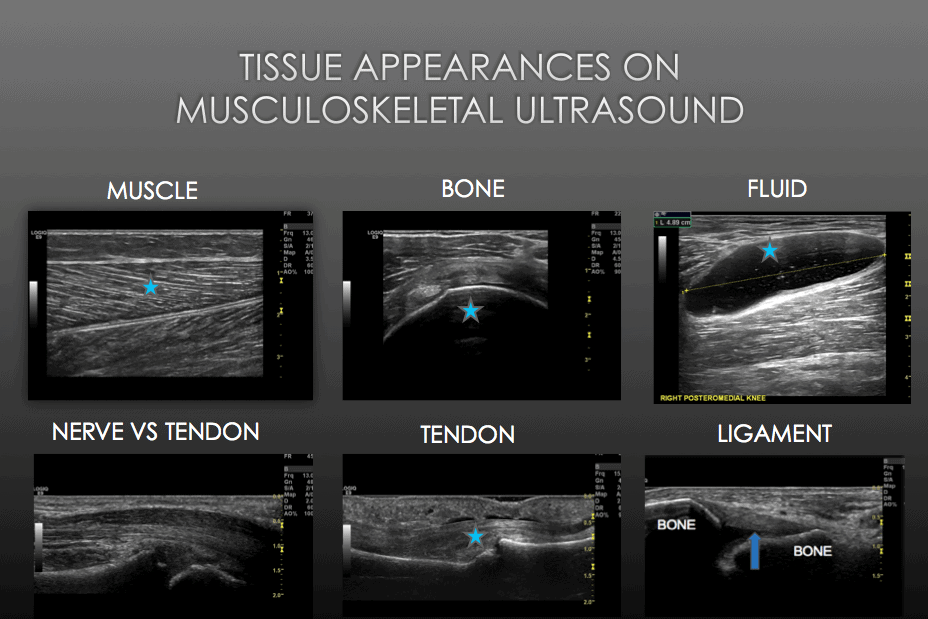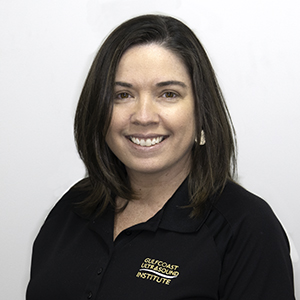The utilization of ultrasound for musculoskeletal applications has been steadily increasing among many specialty groups due to its ability to perform dynamic evaluation in real-time with high-resolution quality imaging and its portability and low cost. Ultrasound can be utilized to assess both upper and extremity muscles, joints, joint spaces and capsules, ligaments, tendons, bone, cartilage and nerves as well as guide interventional procedures such as joint aspiration, injection, and regenerative medicine applications. Musculoskeletal ultrasound has proven to be a helpful diagnostic tool across multiple specialties, including PM&R, Orthopedics & Sports Medicine, Rheumatology, Neurology, Chiropractic Medicine, and Physical Therapy.
In order to utilize ultrasound as an effective diagnostic tool, you must first learn how to perform and interpret musculoskeletal ultrasound. This includes understanding the physics of ultrasound, the normal sonographic appearance of musculoskeletal structures, how pathology presents, and how to effectively use ultrasound for needle guidance for interventional procedures. In this brief article, I will cover one of these areas with you – the normal sonographic appearance of musculoskeletal ultrasound.
The echogenicity and reflection of a structure is based on its density and resistance to the ultrasound beam. Structures with low density and resistance to ultrasound appear more anechoic, or echo-free, on ultrasound. Structures that are very dense and have high resistance to the ultrasound beam appear brighter on ultrasound, such as bone or calcifications. Let’s quickly review the normal sonographic appearance of some of the most commonly imaged structures in musculoskeletal ultrasound.
- Tendon: hyperechoic, or bright, with fibrillar echotexture
- Ligament: hyperechoic, or bright, with striated appearance
- Muscle: Hypoechoic, or darker, and separated by fine hyperechoic fibroadipose septa
- Bone: Typically, very hyperechoic with posterior acoustic shadowing and possibly posterior reverberation
- Peripheral nerves: fascicular appearance – individual nerve fascicles are hypoechoic, surrounded by hyperechoic connective tissue with a honeycomb appearance in short axis
Ready to learn more and start incorporating musculoskeletal ultrasound into your daily clinical practice? Come train with the best at our upcoming Blended Introduction to Musculoskeletal Ultrasound course November 6 -7, 2023. This course provides participants a comprehensive introduction to upper and lower extremity musculoskeletal ultrasound for diagnostic applications and ultrasound guided injection/aspiration techniques while providing the most flexibility and time/cost savings.
Here's how the course format works. You will begin with the self-paced online course. Taught by leading musculoskeletal ultrasound experts, the online course incorporates comprehensive lectures and interactive case presentations, and post-activity quizzes.
Then you’ll attend the Scanning Skills Workshop in sunny St. Petersburg, FL. This Two-Day (12 Hours) scanning skills workshop features the industry lowest 3:1 participant to expert faculty ratio with standardized patient models and inanimate phantoms for interventional practice.
So why put off until tomorrow what you can do today? Call us or visit www.gcus.com to get yourself registered and start your path to becoming a musculoskeletal ultrasound expert!



